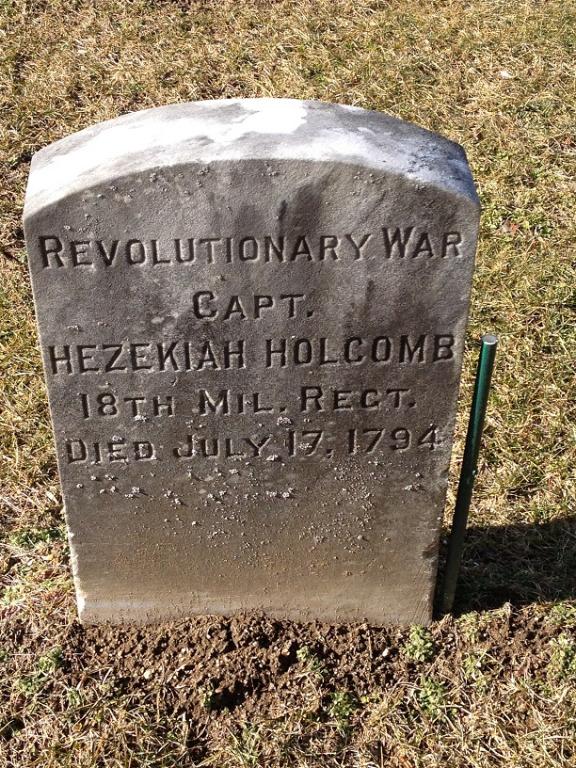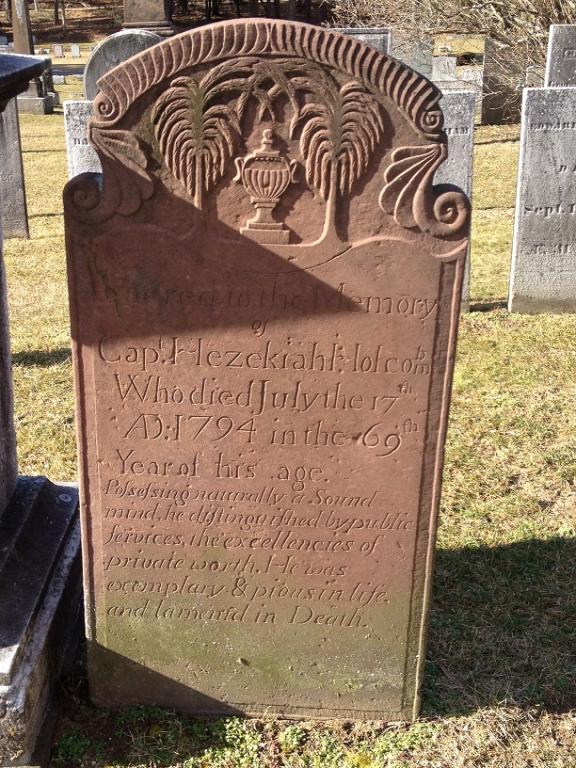Hezekiah HOLCOMBE/HOLCOMB Sr
SAR Patriot #:
P-183342
The following information was assembled from numerous sources and cannot be used directly as proof of Qualifying Service or Lineage.
It is considered a research aid and is intended to assist in locating sources that can be used as proof.
State of Service: CT
Qualifying Service: Captain / Patriotic Service
DAR #: A056790
Birth: 27 Jan 1726 Simmsbury / Hartford / CT
Death: 17 Jul 1794 bur. / Hartford / CT
Qualifying Service Description:
- Served as a Captain in the American Revolution in the 18th Conn. Regmt. and 11th Conn. Regt
- Captain of the 18th Connecticut Regiment, organized there as Capt Lemuel Bates Company. Commanded the 11th Connecticut Regiment for duty in New York, arriving there August 16,1776. He was discharged September 25, 1776
Additional References:
- Connecticut Men in the Rev War, pg 470 &. 472
- Connecticut Rev War Military Lists, 1775-83, pg 203
- U.S. Rev War Rolls, 1775-1783
- DAR RC # 706316 cites NARA, M881, COMP MIL SERV RECS, ROLL #361
Spouse: Susanna Alderman
Children: Abel; Timothy;
Members Who Share This Ancestor
| Date Approved | Society | ACN | SAR Member Info | Lineage via Child | View Application Detail | |
|---|---|---|---|---|---|---|
| 1993-01-04 | IN | 211884 | Jeffrey Dale Zuverink (139897) | Susannah | ||
| 1997-06-25 | IL | 201674 | Joseph Eugene Smith (148487) | Timothy | ||
| 1997-07-17 | FL | 201179 | Jack Norman Holcomb (148610) | Timothy | ||
| 2012-07-30 | IN | 48987 | Kegan Michael Smith (184346) | Susanna | ||
| 2012-11-07 | NY | 50649 | Seward Russell Osborne Jr. (185401) | Abel | ||
| 2017-05-19 | MN | 73382 | Robert Wayne Ginger Allison USN (195656) | Timothy |
Location:
Bloomfield / Hartford / CT / USA
Find A Grave Cemetery #:
Marker Type:
SAR Grave Dedication Date:
Comments:
Photos displayed courtesy of Robert Wayne Ginger Allison, MN SAR
Directions to Cemetery / Gravesite:

